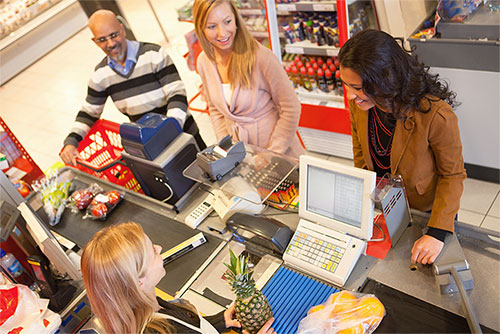
Considerations for Video Analytics in Retail
- By Shahar Ze’evi
- Nov 18, 2013
 There was a time, just a few years ago, when many people thought video analytics for the retail market would give them all the information they could possibly need by simply plugging in a camera and pressing record. The promises did not live up to the hype and video analytics never saw the rapid adoption by the retail market that was anticipated at the time.
There was a time, just a few years ago, when many people thought video analytics for the retail market would give them all the information they could possibly need by simply plugging in a camera and pressing record. The promises did not live up to the hype and video analytics never saw the rapid adoption by the retail market that was anticipated at the time.
Today, however, expectations have been reset, and video analytics systems have become more sophisticated and technologically advanced. Though it is still not a plug-and-play world, video analytics, as part of an integrated solution, can significantly empower retailers when they invest in the proper video infrastructure and take the time to understand how they want use the analytics.
Longevity and experience. When choosing the right video analytics program, make sure the supplier and installing company have longevity and experience in these complex programs and will be able to support the needs of your organization.
Video analytics companies are in large supply, but not all of them may be around in another five years. Therefore, take the time to find a supplier that meets your organization’s needs and will more than likely be available for a long-term partnership.
Applications. Loss prevention and sales/merchandising are the two main applications for video analytics in retail. With loss prevention applications, retailers must define their requirements as specifically as possible, whether they are attempting to eliminate shrinkage from internal theft, external theft or both. Although loss prevention analytics can take on a number of scenarios, as an example, a drugstore may employ analytics on the camera monitoring aisle five, where it caught a shoplifter stealing razor blades, as well as on the camera in the back room where internal theft could be suspected.
Retailers should also decide if there are specific behaviors, such as loitering, that store personnel want notifications about or if management is looking to understand transaction inaccuracies from specific cash registers.
Integration. Integration between a video management system and a retail point-of-sale system can help LP personnel with exception reporting, where LP personnel want to know if a customer was present during a voided transaction at a cash register – often the difference between a valid transaction and fraudulent one.
The use of video analytics combined with exception reporting can also prioritize which exception to view by highlighting if there is no customer present during a transaction or if the EAS tags have been removed, when available through the Article Surveillance System (EAS).
Since a video analytics system is set up to collect a lot of data, a natural inclination for retailers is to use some of that data to understand their customers’ behavior. The biggest challenges for retailers with merchandising applications are determining the specific scenarios they want data for, as well as in what form they want the data. Who will be using the data is just as important as what data they want to see.
Key to success. The biggest key to success is being able to pinpoint exactly what you are looking for from a video analytics program. This is particularly important because different applications call for different equipment, setup and data. For example, if the loss prevention department is interested in employee theft or fictitious transactions at the registers, cameras should be placed with a clear line of sight to the register. On the other hand, if management wants to analyze the behavior of how long people are standing in the queue and which end cap displays are most effective a wide-angle lens, covering a larger field of view, may be more cost effective.
About the Author
Shahar Ze’evi is the senior product manager, Tyco Security Products, responsible for the American Dynamics video management portfolio.